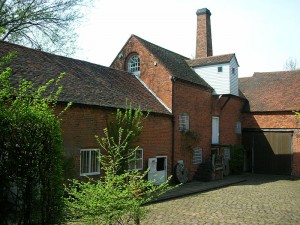 The West Coast Sentinel has a nice write-up about Sarehole Mill — the Birmingham water mill that was a playground in his youth, and later an inspiration for The Mill in The Lord of the Rings. Click through at the bottom to read the entire article.
The West Coast Sentinel has a nice write-up about Sarehole Mill — the Birmingham water mill that was a playground in his youth, and later an inspiration for The Mill in The Lord of the Rings. Click through at the bottom to read the entire article.
“I call this the ‘Gollum pond’,” says Irene DeBoo, as we reach a small clearing coated in luminous lime-shaded algae. “One day, my dog thought he could walk across it. He couldn’t. He fell in and came out all green!”
We are in Moseley Bog, an eerily atmospheric woodland where a spider-web of trails – both boardwalked and soily – weave through clusters of elders, birches, sycamores and oaks, whose lurching trunks and twisting branches conjure up visions of fairy tales and horror stories.
Ripe for adventures, the bog was a beloved childhood playground of JRR Tolkien. He would come here to draw trees, climb them, and, apparently, even talk to them. Some Tolkienites believe this was the prototype for Fangorn Forest, home of the Ents, the walking, talking trees of Lord of the Rings – Tolkien’s hallowed tome, which this year (2014) marks its 60th birthday.
Others believe the bog inspired the Old Forest (where lurked Tom Bombadil and Old Man Willow in Tolkien’s epic fantasy). Either way, it’s a highlight of Birmingham’s Tolkien Trail – a self-guided map that flaunts the old houses and haunts of the writer, who was born, John Ronald Reuel Tolkien, in South Africa in 1892 but grew up in Birmingham, native home of his parents.
“Tolkien lived in many places around the city, but he was at his happiest around Sarehole,” says DeBoo, the curator manager at Sarehole Mill, a rustic landmark by the River Cole, a short walk from Moseley Bog, on the leafy southern outskirts of Britain’s second largest metropolis.
“Tolkien would play – well, trespass – in the mill grounds with his younger brother, Hilary, and they were often chased off by the mill owner’s son. He was usually covered in flour so the children nicknamed him the ‘White Ogre’.”


